Important notice: All details are correct at the time of writing but are subject to change. For the latest, up to date information on the ULEZ scheme please visit the TfL website
What does ULEZ mean?
The ULEZ – Ultra Low Emission Zone - came into force in central London on April 8 2019.
ULEZ checker
In this article, we will look in detail at which vehicles are ULEZ compliant, as well as the areas where ULEZ applies.
However, if you’re planning a journey into the ULEZ zone soon, you might just be wondering whether you have to pay the ULEZ charge.
Luckily, there’s a quick ULEZ checker to find out!
If you’re not sure whether your vehicle meets the current emissions standards required for the Ultra Low Emission Zone, it is possible check your vehicle with this TFL ULEZ checker to see if your vehicle is ULEZ compliant.
Which vehicles are exempt? Is my car exempt from ULEZ?
A number of vehicles are ULEZ compliant; that is, you will not be subject to the ULEZ charge if you own a certain type of vehicle.
You’re probably wondering ‘Is my vehicle ULEZ compliant?’
Well, if you own one of the following, it is:
- Vehicles that meet Euro 6 - introduced in September 2015 for cars and September 2016 for vans - are exempt, as are some models that met the standard earlier
- Almost every petrol car registered from 2005 and some registered between 2001 and 2005
- Petrol cars registered after 2006
- Motorcycles sold after July 2007
- All fully electric vehicles - since they are zero-emission, making them ULEZ exempt
- Vehicles with a historic tax class
- Military vehicles
- Some farm vehicles
- Some showman's vehicles
Read our article on 'Euro 1 to Euro 6 explained: what's your vehicle's emission standard?'.
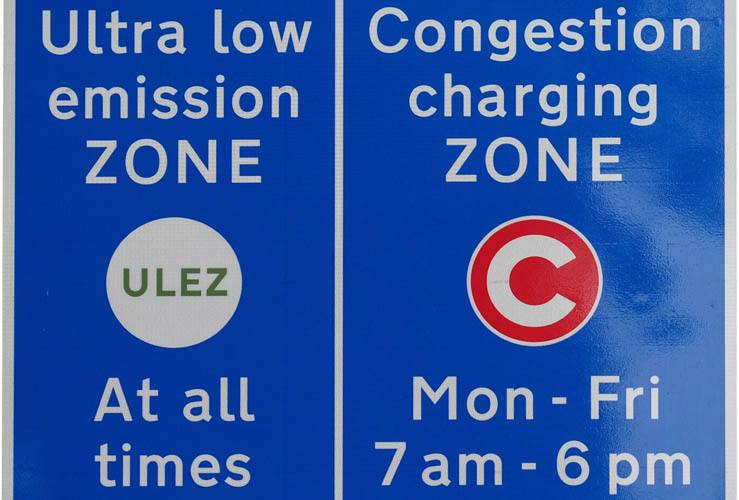
Why was the London ULEZ introduced?
The London ULEZ was planned by Boris Johnson when he was Mayor of London and implemented by his successor Sadiq Khan.
The aim of the Ultra Low Emission Zone is to improve London's air quality, after a recognition that dangerous levels of Nitrogen Dioxide (NO2) and Particulate Matter (PM) existed within the capital.
The ULEZ, which replaced the T-Charge (officially known as the Emissions Surcharge) aims to reduce these dangerous levels and protect London’s young, elderly and those suffering respiratory problems.
TFL says tthe Ultra Low Emission Zone has already helped to reduce harmful nitrogen dioxide pollution by nearly half in central London and a fifth in inner London.
What is ULEZ compliant?
To be ULEZ compliant means a car must meet certain emission standards.
Petrol, diesel and hybrid cars that meet the emissions standards set out by London’s ULEZ, and other low emission zones in the UK are ULEZ compliant.
Additionally, some other vehicles are exempt from the London ULEZ charge.
A full list of ULEZ exempt vehicles can be found further below.
Non ULEZ compliant vehicles
For vehicles that are not ULEZ compliant, the ULEZ charge is levied on these drivers.
Non compliant ULEZ vehicles do not meet the latest emissions standards.
The fee targets diesel vehicles in particular, alongside many older petrol cars and vans
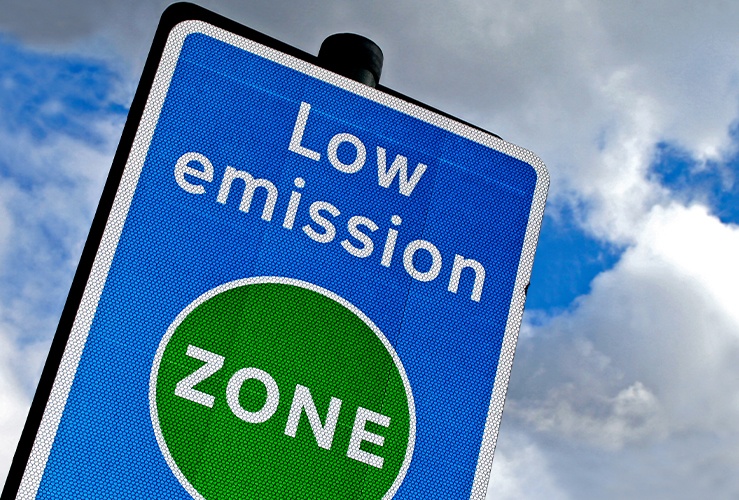
Which vehicles are affected? Which vehicles are subject to the ULEZ charge?
Most diesel cars registered before September 2015 and most vans registered before September 2016 are subject to the ULEZ charge.
Most cars with petrol engines registered before 2001 are liable, together with some vehicles registered between 2001 and 2005.
The London ULEZ charge must also be paid by lorries and buses registered before 2014.
How much is the ULEZ charge?
Any ULEZ-liable vehicle driving in the zone must pay £12.50 per - that's on top of the daily £15.00 Congestion Charge, which is applicable in Central London
Heavier vehicles such as lorries over 3.5 tonnes, and buses over 5 tonnes do not need to pay the ULEZ charge. However, they will need to pay the London-wide LEZ charge if they do not meet the Low Emission Zone (LEZ) emissions standard.
When is the ULEZ charge payable?
The ULEZ operates 24 hours a day, seven days a week, every day of the year. (excluding Christmas Day), with the daily rate resetting at midnight.
This means that, if you were to enter the Ultra Low Emission Zone at 11.59pm and exit two minutes later, you’ll be charged for two days (£25).
Is my car ULEZ compliant?
You may be wondering, is my car ULEZ-exempt? Read on to find our list of ULEZ-exempt cars.
Remember, you can use ULEZ checker
If you’re still not sure whether your vehicle meets the current emissions standards required, don't forget you can check your vehicle with the TFL ULEZ checker to see if your vehicle is ULEZ compliant.
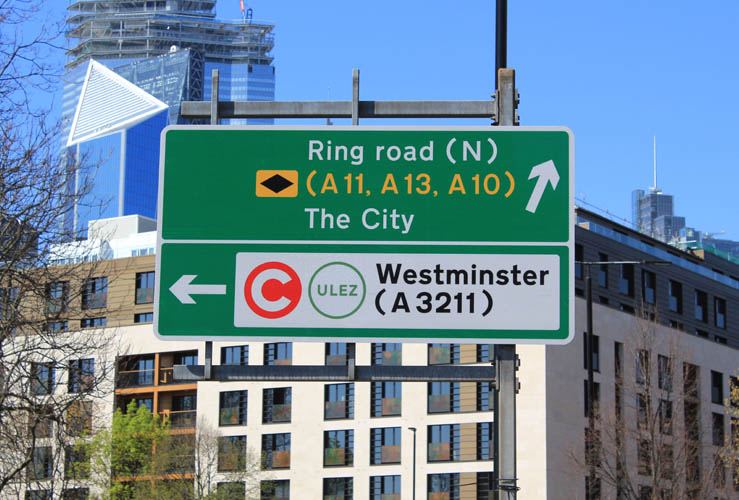
Can I make my car ULEZ compliant?
If you do not have a ULEZ exempt car or van, it may be possible to modify your non-compliant car or van to meet the requirements,
How to make a car ULEZ compliant
You can make your car ULEZ compliant by either changing the engine of upgrading the exhaust.
However the cost of doing so and then re-certifying your car so that it is recognised as compliant by the DVSA is unlikely to make it worthwhile.
If my car isn’t ULEZ compliant, what are the alternatives?
The best alternatives if you need to travel into the Ultra Low Emissions Zone are to go by other means, such as cycling or public transport, or sell the car and buy one that is ULEZ compliant.
How is the ULEZ enforced?
There are no physical barriers or checks for Ultra Low Emission Zone. Instead, London’s vast network of number plate recognition cameras check to see if vehicles have paid the ULEZ fee.
Is there a Residents' Congestion Charge discount?
Those with a residents' Congestion Charge discount were exempt from paying the ULEZ charge until October 2021.
However, residents with a Congestion Charge discount whose vehicles don’t meet the required Euro standards for ULEZ are now required to pay the daily charge within the zone
Are disabled or disabled passenger tax class vehicles ULEZ exempt?
Keepers of vehicles registered with a 'disabled' or 'disabled passenger vehicles' tax class will be exempt from the ULEZ charge until 24 October 2027 as long as their vehicle doesn't change tax class. (Vehicles operated by or on behalf of TfL will not benefit from this grace period.)
Paying the ULEZ charge: How to pay the ULEZ charges
You can pay the ULEZ charge at the TfL website or using the TfL Congestion Charge App.
Alternatively, you can pay by phoning 0343 222 2222 between 8am and 8pm, Monday to Friday.
You can pay the ULEZ charge by midnight on the third day following the journey or up to 90 days in advance, else you risk facing a penalty notice.
ULEZ Auto Pay
You can also register for Auto Pay to pay ULEZ.,
With Auto Pay, TfL will automatically record the number of charging days a vehicle travels within the charging zone each month and bill you accordingly.
You can register up to five vehicles on ULEZ Auto Pay.
Initially there was a £10 admin charge for Auto Pay but this has now been scrapped.
What are the penalties for failing to pay the ULEZ?
If you drive a non-exempt car, van or motorcycle into the Ultra Low Emission Zone without paying, you’ll be sent a £180 penalty in the post.
If you pay within 14 days this will be reduced to £90. However, you can appeal the fine if you feel it was unfairly levied.
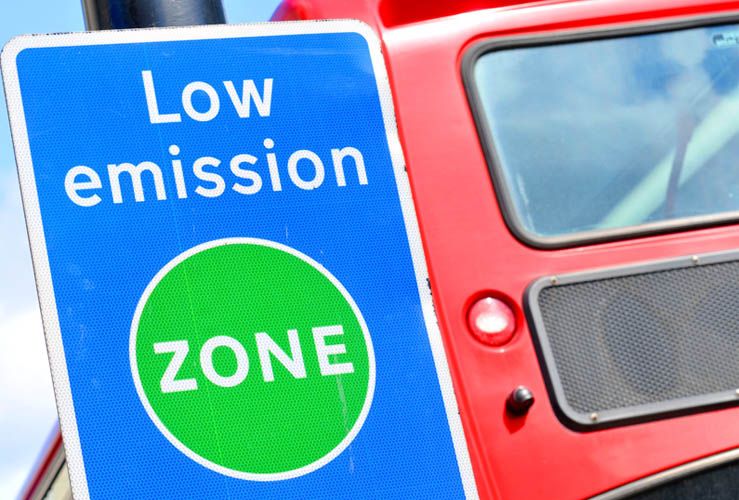
ULEZ and LEZ: What’s the difference?
The LEZ - Low Emission Zone - was phased in from 2008 and covers most of Greater London.
The Low Emission Zone aims to encourage more polluting - especially heavier - vehicles driving in the capital to become cleaner.
When is London’s Low Emission Zone operational?
The LEZ operates 24/7, all year round. LEZ-liable vehicles will need to pay either £100 or £300 per day (see below).
LEZ fees, quoted from tfl.gov.uk:
- “£100 for vans or specialist diesel vehicles (over 1.205 tonnes unladen weight up to 3.5 tonnes gross vehicle weight) or minibuses (up to 5 tonnes) which do not meet Euro 3 standards.
- £100 for HGVs, lorries, vans and specialist heavy vehicles over 3.5 tonnes as well as buses/minibuses and coaches over 5 tonnes which do not meet Euro VI (NOx and PM) standards, but meet Euro IV (PM)
- £300 for HGVs, lorries, vans and specialist heavy vehicles over 3.5 tonnes as well as buses/minibuses and coaches over 5 tonnes which do not meet Euro IV (PM)”
The expansion of ULEZ
The expansion of ULEZ in 2021
Until October 2021, the London ULEZ covered the same area as London’s Congestion Charge zone; an area expanding outwards from Waterloo, with the boundary stretching to Vauxhall Bridge in south west, up to Paddington in the north west, across to Angel in the north and down to Whitechapel, then over Tower Bridge and back to Vauxhall via Elephant and Castle.
However, from 25 October 2021, the Mayor of London expanded London’s ULEZ significantly, extending to both the north and south circular roads covering an area 18 times larger than the Central London Congestion Zone.
Further expansion of the ULEZ in 2023
in March 2022 the Mayor of London announced plans to extend the Ultra Low Emission Zone (ULEZ) across the whole of London.
These proposals have resulted in the scheme extending to the edges of London's boroughs.
The new London-wide ULEZ came into effect from 29 August 2023, and the ULEZ zone stretches from Biggin Hill in the southeast to Rickmansworth in the northwest. And from Waltham Abbey and Brentwood in Essex to Epsom in Surrey.
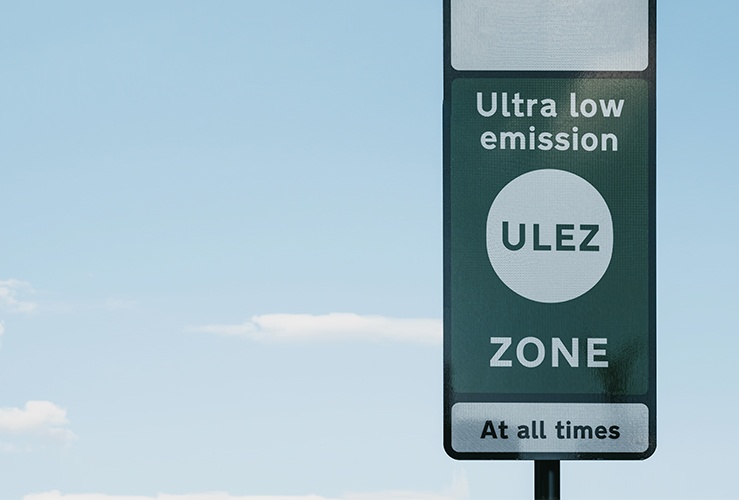
Why has the London ULEZ been expanded?
The aim of the expanded ULEZ is to help reduce harmful Nitrogen Dioxide across London.
Backlash to the ULEZ expansion
The ULEZ expansion has faced backlash from protestors. There have been demonstrations and reportedly, some 4,500 ANPR cameras used to record vehicle number plates, have been damaged in little over a year.
Foam and stickers have been placed on cameras to prevent them from reading number plates, whilst other instances have seen wires cut and cameras being stolen by anti-ULEZ ‘Blade Runners.’
How many vehicles that travel in the Ultra Low Emission Zone are ULEZ compliant?
Many of those who travel in the expanded ULEZ now drive compliant vehicles.
Across both inner and outer London, 95% of vehicles overall seen driving in London on an average day now comply with the ULEZ emissions standards, which is up from 39% in February 2017 when plans for the larger area were first announced.
What about outside London?
A number of other UK cities have introduced Low Emission Zones or are in the process of implementing these.
These include Clean Air Zones in Bath and Birmingham and a ZEZ (Zero Emission Zone Pilot) in Oxford.
Low Emission Zones have been introduced in Portsmouth in 2021, and in Manchester, Bradford, Bristol, Edinburgh and Aberdeen in 2022, as well as in Sheffield, Newcastle and Glasgow in 2023.
Is my car ULEZ Compliant?
Wondering what cars are exempt from ULEZ?
Here we look at ULEZ exempt cars in more detail…
ULEZ compliant cars in more detail
Petrol cars
Cars that meet the Euro 4 (and Euro 5 and Euro 6) emissions standard are exempt, which means almost every car registered after January 2006 is ULEZ compliant.
Department for Transport data revealed that 12.7m of the UK's 18.3m petrol cars were already ULEZ compliant cars, meeting the applicable standards when ULEZ was introduced.
Diesel cars
ULEZ-exempt diesels must meet the Euro 6 standard.
Most diesels registered since September 2015 meet these regulations.
A number of pre-2015 diesels also meet the Euro 6 standard and, being ULEZ compliant cars, are exempt from the charge.
Can I make my diesel car ULEZ compliant?
As covered earlier, it may be possible to make your car ULEZ compliant by changing the engine of upgrading the exhaust, but it could be costly, and unlikely to make it worthwhile.
Is my van ULEZ compliant?
ULEZ compliant vans in more detail
To avoid the ULEZ charge, diesel vans must comply with Euro 6, while petrol vans must meet Euro 4.
Nearly all new vans built since September 2016 meet Euro 6.
If you are going to be driving your van in a ULEZ area, don’t forget to get your van breakdown cover – No one wants the inconvenience of being stuck anywhere following a breakdown.
Considering changing to an EV van? Find out if an EV van is the right choice for you.
Is my hybrid ULEZ compliant?
If you drive a hybrid car, perhaps you are wondering if hybrid cars are exempt from ULEZ?
Hybrids do not receive any free-passes; they get treated as diesel and petrol cars. However, most hybrids already meet the Euro 4, 5 or 6 standards, so won't pay the ULEZ.
However, some older models such as the original Toyota Prius, will incur the fee.
Do hybrid cars pay the Congestion Charge?
Very few vehicles are exempt from paying the London Congestion Charge, which rules out many vehicles being exempt from paying the charge, including most hybrids.
Privately owned vehicles exempt from the Congestion Charge include:
- Two-wheeled motorbikes (and sidecars) and mopeds
- Vehicles used by disabled people that are exempt from vehicle tax and have a 'disabled' taxation class
Hybrid vehicles are categorised the same as petrol or diesel vehicles when it comes to paying the Congestion Charge and do not qualify for the Congestion Charge cleaner vehicle discount Indeed, only battery electric or hydrogen fuel cell vehicles are eligible for the cleaner vehicle discount. for the daily Central London Congestion Charge fee.
From 25 December 2025, the cleaner vehicle discount will be discontinued, meaning all vehicle owners, unless in receipt of another discount or exemption, will need to pay to enter the Congestion Charge zone during charging hours.
Find out how to pay the London Congestion Charge.
Is my motorcycle ULEZ compliant?
For two-wheelers and quads, the standard to meet is Euro 3: All motorbikes, mopeds and quadricycles built after July 2007 had to meet Euro 3, meaning many such vehicles are exempt from paying ULEZ.
If you are going to be riding your motorcycle in a ULEZ area, don’t forget to get your motorcycle breakdown cover – No one wants the inconvenience of being stuck anywhere following a breakdown.




